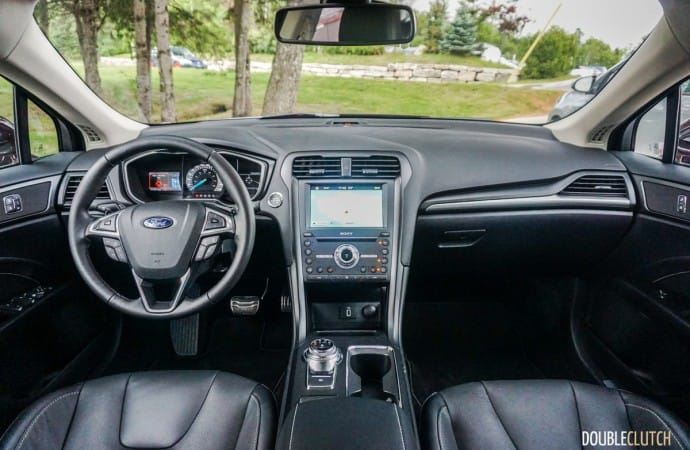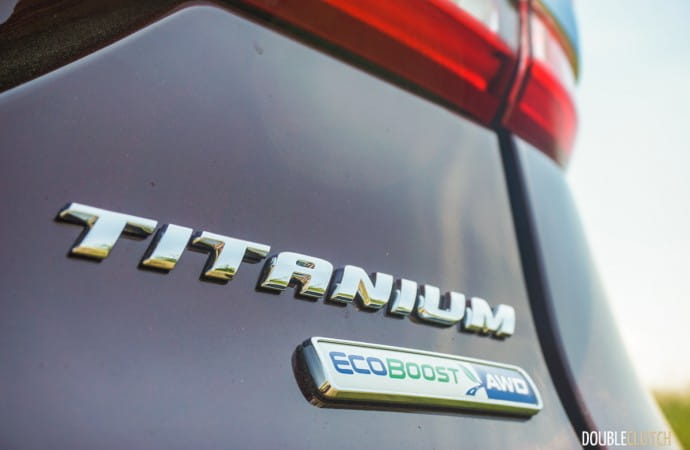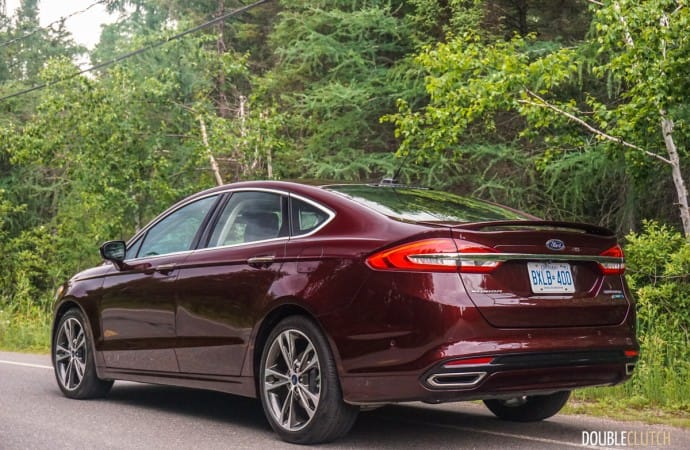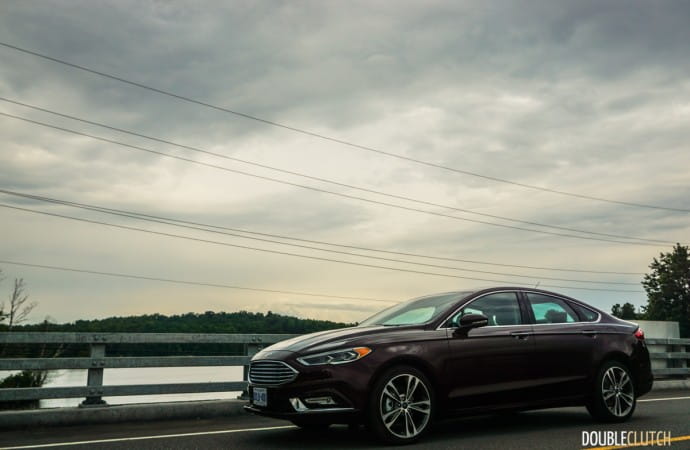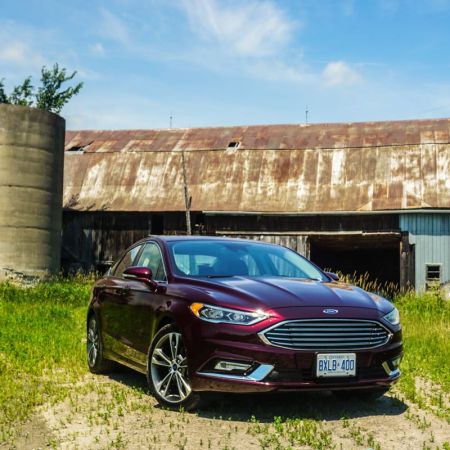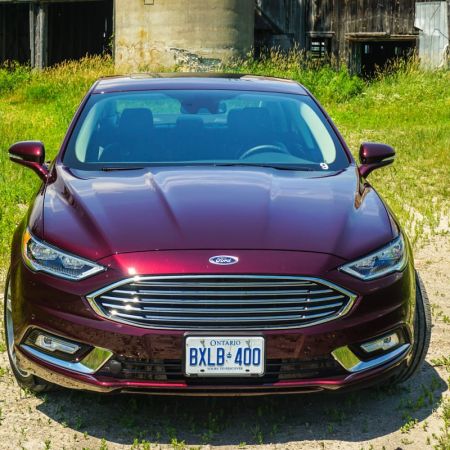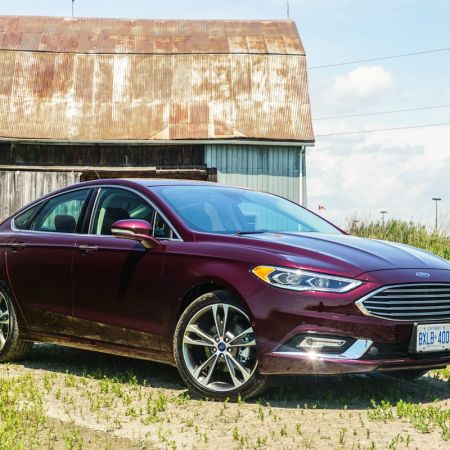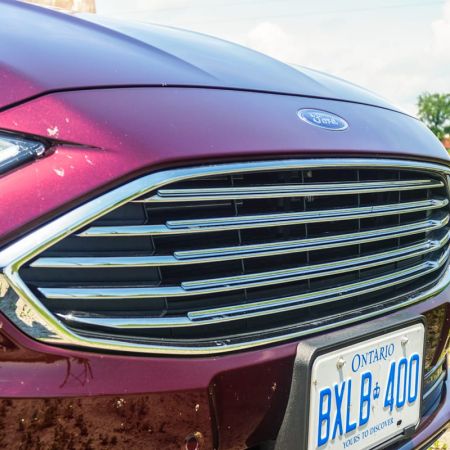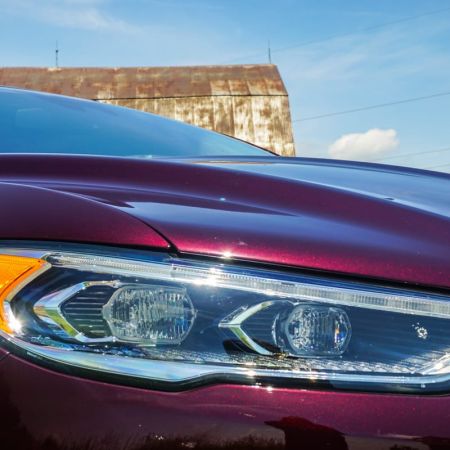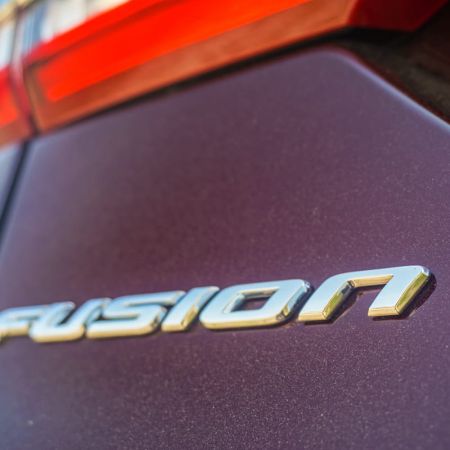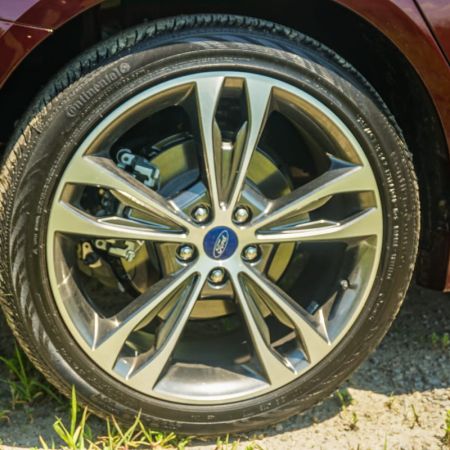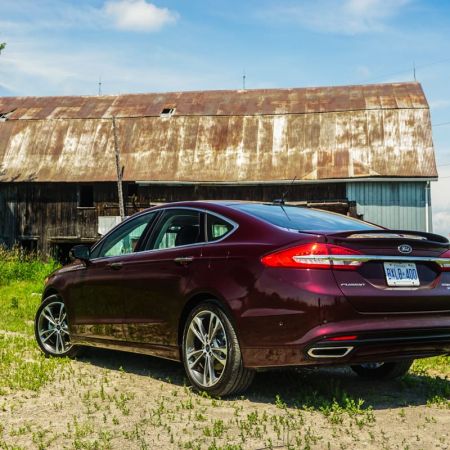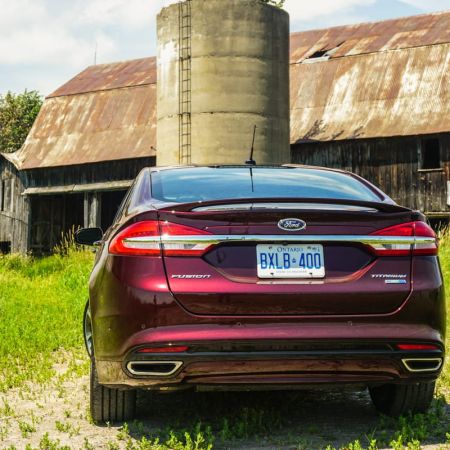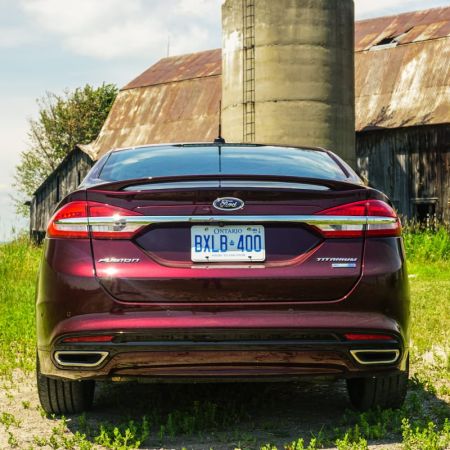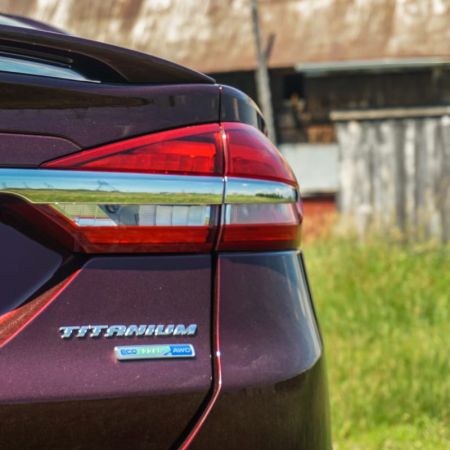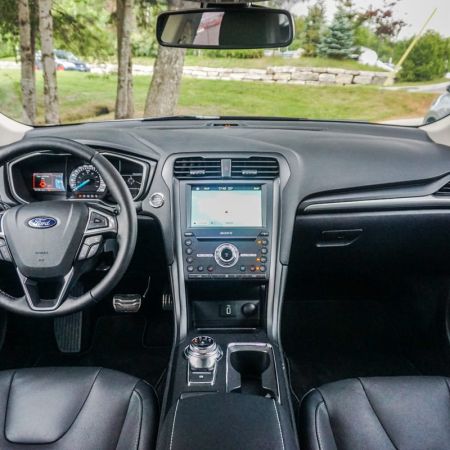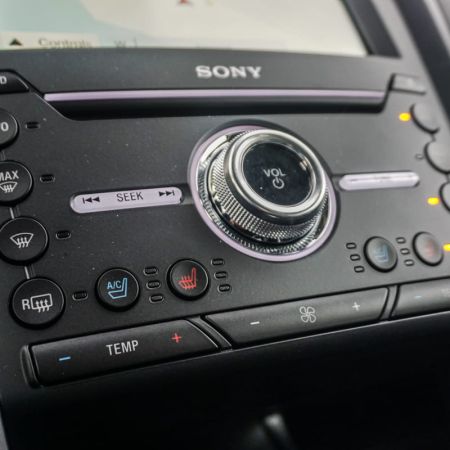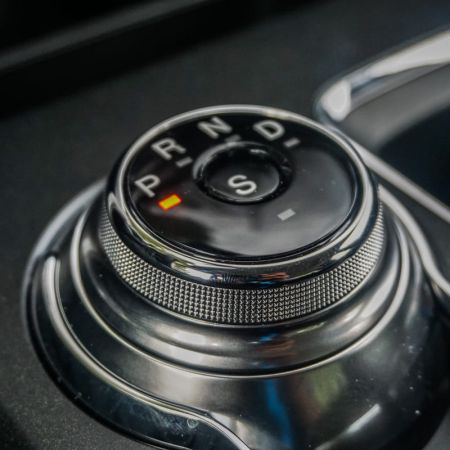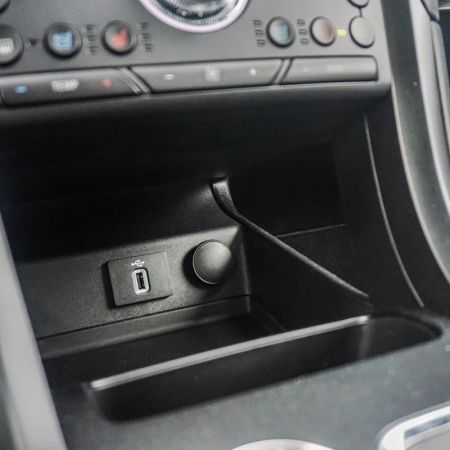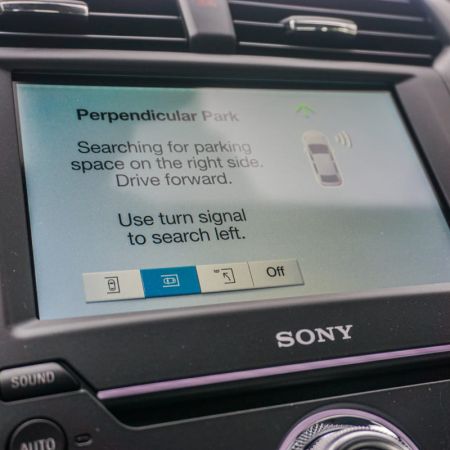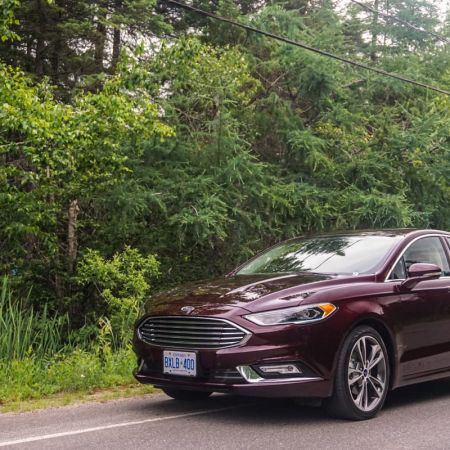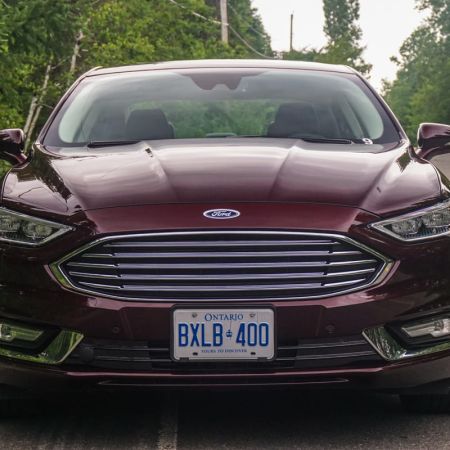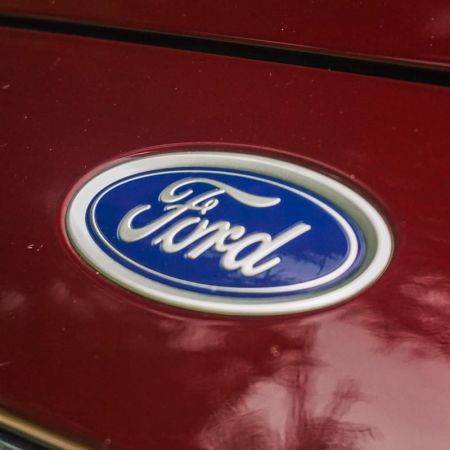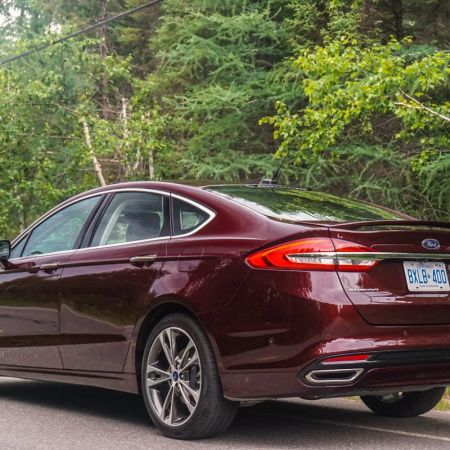Montréal, QC – The Ford Fusion has been one of the most stunning cars in its segment since the introduction of the current generation in 2013. Since then though, competition has moved fiercely, requiring Ford to step up their game and implement a mid-cycle refresh for the 2017 model year. This is a car that is purchased not only by Ford’s loyal clientele, but by those attracted to a midsize sedan boasting excellent design as well as the availability of the latest technology. We were invited to the Esterel Resort, a few hours north of Montréal, to sample the 2017 Ford Fusion in a variety of trim levels.
From a design standpoint, the Fusion goes through a natural progression on its already-excellent styling. The cleanly flowing lines mate perfectly with the car’s proportions, and the fascia and grille are almost reminiscent of something from Aston Martin. The grille has been redesigned on all models, with a unique one on the “Sport” trim, along with unique 19” polished aluminum wheels. The new Fusion isn’t a huge departure from the previous model, but Ford has done research with existing customers to see what customers really want, and implemented these changes accordingly.
On the inside, the most evident changes are evident as soon as you look at the center console. A rotary selector, not unlike the one seen in the latest Jaguar vehicles, has replaced the classic gear shifter. When the vehicle is turned off (even if left in gear), the selector automatically shifts into “Park” for safety. There is also a new electronic parking brake as opposed to a conventional foot-operated one. The interior also uses new, more premium materials as well as additional storage space. The cupholders have been reconfigured for maximum space efficiency and better accommodations of varying beverages, as well as convenient locations for media devices.
The Platinum model also includes quilted leather seats, heated and ventilated. Materials overall have been improved across the Fusion board, with the Platinum offering stylish colour contrast options. A full leather-wrapped console is also available, which is a segment exclusive. On the technology side, the car offers a full safety suite including pre-collision assist with pedestrian detection, adaptive cruise control (with full stop/go), park assist with self-parallel and perpendicular parking, and lane keeping assist. This is the only car in its segment capable of parking itself into perpendicular spots, and the ease of the system makes it even more appealing.
In order to improve road noise and ensure a quiet, smooth ride, the Fusion now uses acoustic glass both on the windshield as well as the side windows. There is also active noise cancellation on Sport and Hybrid models, a technology that more manufacturers should take advantage of. This really shows out on the road, because the Fusion’s quietness is instantly evident on acceleration. The car can still be heard, but tire and ambient noise is all but gone, delivering a far more comfortable driving experience. The suspension includes continuously controlled damping on Sport models, which is firm without being thrashy.
In Canada, the base Fusion is equipped with the naturally aspirated 2.5L four-cylinder. What most will opt for is either the 1.5L EcoBoost on the SE, which is good for 181 horsepower and 185 lb-ft of torque, or the 2.0L EcoBoost, packing 245 horsepower and 275 lb-ft. The range topper is the 2.7L turbocharged EcoBoost, which is on the Sport. This is the flagship motor on the Fusion, good for 325 horsepower and 380 lb-ft of torque, and mated to all-wheel-drive. This car is identifiable by its quad-tipped exhaust and unique wheels.
Ford still offers the Fusion Hybrid and Energi (plug-in hybrid, capable of 35km of EV-only range in optimal conditions). The regular Hybrid uses hybrid technology, with regenerative braking, brief electric-only driving, and Ford SmartGauge with an eco guide built into the computer. We actually tested the Energi (reviewed here) last summer and were very impressed with its performance, if it fits your lifestyle. The Hybrid is equipped with a 1.4-kWh lithium-ion battery mated to the gasoline motor, and the car has 188 horsepower, competitive with the likes of the Honda Accord Hybrid (reviewed here) and the Toyota Camry Hybrid. The base Hybrid in S trim is the lowest-priced hybrid midsize sedan in Canada.
All models other than the base S and the SE (equipped with the 2.5L naturally aspirated engine) come equipped with automatic start/stop technology for fuel savings, as well as active grille shutters and paddle shifters for those craving a sportier drive from their midsize sedan. Ford has ensured that their start/stop technology, which we recently sampled on the 2017 Escape (reviewed here), is some of the quietest and most vibration free in the industry. Those who find it annoying can turn the system off, which is a nice touch.
The new Fusion launches with SYNC 3 infotainment (reviewed here), which now includes Apple Car Play and Android Auto. We used our iPhone 6 Plus with the car, and the connectivity is seamless, including full use of Siri as well as Maps. One thing we would like to see is the integration of Google Maps from the iPhone onto the car’s system – you’re currently restricted to using either Ford’s proprietary navigation (if equipped) or Apple Maps, which isn’t the greatest. Overall though, the fact that most manufacturers are catching onto easy smartphone integration means that consumers will have a much easier time adapting to their vehicles.
Out on the road, whether in the city or on the highway, the Fusion has impeccable driving manners. Regardless of the trim level or engine, the car is adequately responsive and the torque curve of the EcoBoost motors is just enough to keep the majority of drivers satisfied. The non-hybrid models get a six-speed automatic, which is decent enough – most rivals also use either a CVT or a six-speed. Fusion remains a sporty choice, and handles pretty well too. Steering is electrically assisted and has quick reflexes, but it’s not a sports car and doesn’t carry itself as such.
Pricing for the Fusion starts at $23,688 for the base S model with the 2.5L engine, and the car comes decently equipped for this price. The volume seller will be the SE, which starts at $25,588. On the SE, the 1.5L engine costs an extra $900, while the 2.0L EcoBoost costs an additional $3,000. A nicely equipped Fusion with a few technology packages and the 1.5 EcoBoost can be had for less than $30,000, which is exactly what the vast majority of Canadians will opt for.
With the addition of some new gadgets, driver assist systems, and better smartphone integration, the 2017 Ford Fusion has stepped up its game to aggressively compete in one of the most crowded and popular segments in Canada. The Sport is a hot choice that destroys the vast majority of rivals, none of which currently offer this much horsepower or torque. Ford’s styling is not only bold, but represents a more premium image for the Fusion, and goes a long way towards attracting first-time buyers into the Ford family.


